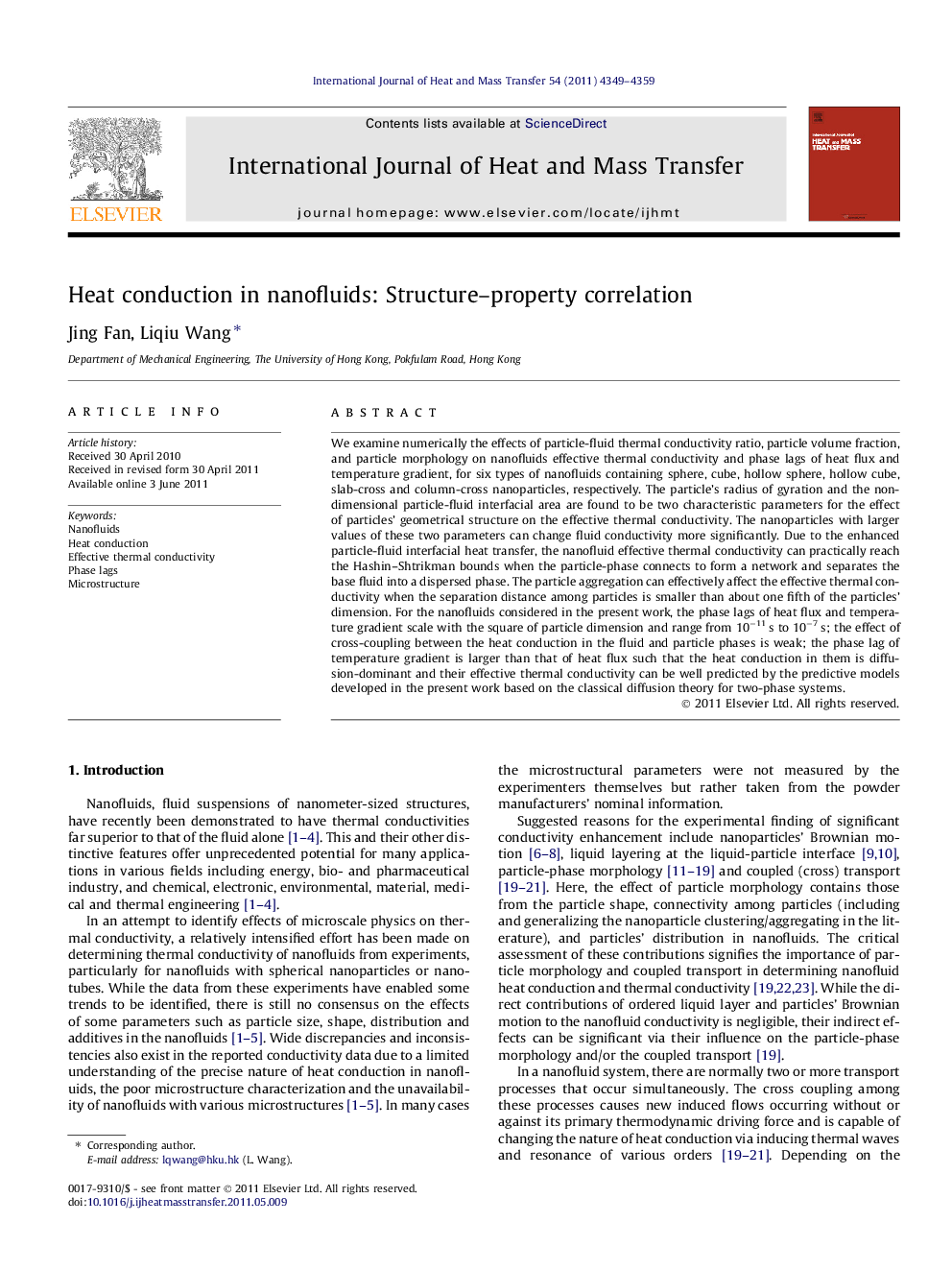| کد مقاله | کد نشریه | سال انتشار | مقاله انگلیسی | نسخه تمام متن |
|---|---|---|---|---|
| 658600 | 1458104 | 2011 | 11 صفحه PDF | دانلود رایگان |

We examine numerically the effects of particle-fluid thermal conductivity ratio, particle volume fraction, and particle morphology on nanofluids effective thermal conductivity and phase lags of heat flux and temperature gradient, for six types of nanofluids containing sphere, cube, hollow sphere, hollow cube, slab-cross and column-cross nanoparticles, respectively. The particle’s radius of gyration and the non-dimensional particle-fluid interfacial area are found to be two characteristic parameters for the effect of particles’ geometrical structure on the effective thermal conductivity. The nanoparticles with larger values of these two parameters can change fluid conductivity more significantly. Due to the enhanced particle-fluid interfacial heat transfer, the nanofluid effective thermal conductivity can practically reach the Hashin–Shtrikman bounds when the particle-phase connects to form a network and separates the base fluid into a dispersed phase. The particle aggregation can effectively affect the effective thermal conductivity when the separation distance among particles is smaller than about one fifth of the particles’ dimension. For the nanofluids considered in the present work, the phase lags of heat flux and temperature gradient scale with the square of particle dimension and range from 10−11 s to 10−7 s; the effect of cross-coupling between the heat conduction in the fluid and particle phases is weak; the phase lag of temperature gradient is larger than that of heat flux such that the heat conduction in them is diffusion-dominant and their effective thermal conductivity can be well predicted by the predictive models developed in the present work based on the classical diffusion theory for two-phase systems.
Journal: International Journal of Heat and Mass Transfer - Volume 54, Issues 19–20, September 2011, Pages 4349–4359